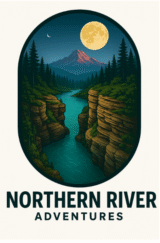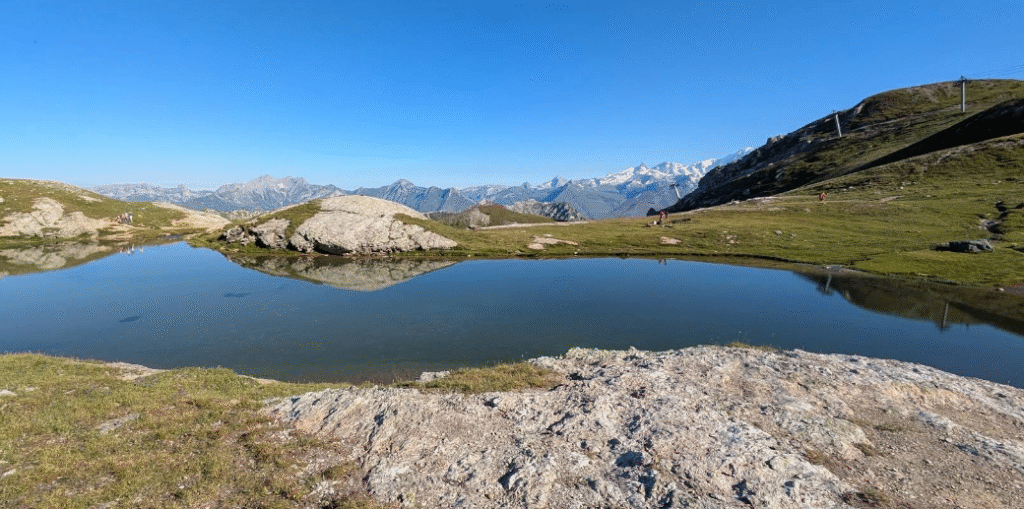
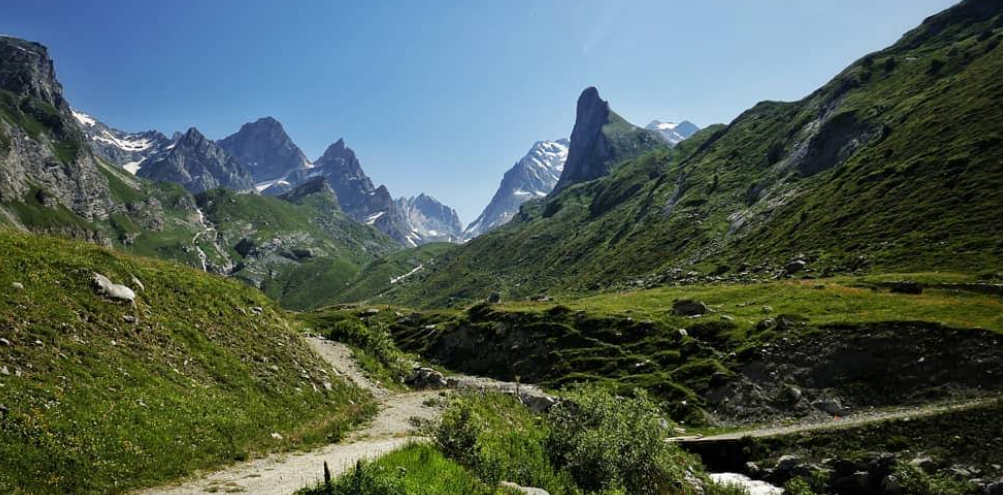
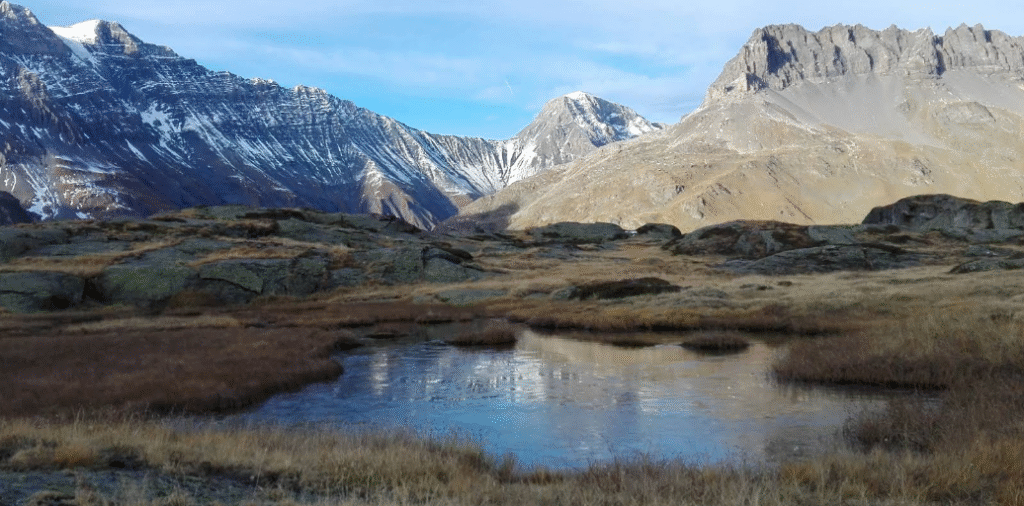
Nestled in the heart of the French Alps, the Parc national de la Vanoise is more than just a national park — it’s a sacred stretch of wilderness that shaped my youth. I grew up in the shadow of these legendary peaks, where crisp air, echoing valleys, and the scent of pine and wildflowers are more than memories — they’re part of who I am. Whether I was trekking past alpine lakes, hiking with friends through snow-capped passes, or spending quiet nights under the stars, this park taught me the true meaning of freedom, solitude, and natural beauty.
In this post, we’ll explore the park’s fascinating history, its most iconic trails and villages, the legend of the Sleeping Woman, and how to make the most of your own adventure in this jewel of the Alps.
🌄 A Park Born From Preservation: The Complete History of the Vanoise
The Parc national de la Vanoise holds the distinction of being France’s very first national park, officially established in 1963. But its roots go much deeper — and its story is one of urgent preservation and ecological victory.
Back in the early 20th century, the Alpine ibex (bouquetin), once abundant in the Vanoise massif, was nearly hunted to extinction. Only a few individuals remained in the Haute Maurienne region, protected by local conservationists and forward-thinking scientists. Alarmed by this ecological loss, nature lovers and scientists pushed for stronger protections.
By the 1960s, the movement gained enough traction to convince the French government to create a protected area spanning over 530 square miles (approximately 1,375 km²). It would link the Tarentaise and Maurienne valleys and preserve the unique biodiversity of the region. This move also mirrored the goals of neighboring Gran Paradiso National Park in Italy, creating the first cross-border protected area in Europe.
Over the years, the park has expanded its mission. It not only protects flora and fauna but also local pastoral traditions, historic mountain hamlets, and eco-tourism. Today, you’ll find more than 100 summits rising above 3,000 meters, glacier-fed lakes, marmots chirping on the rocks, and ibex perched high on steep ridges — symbols of what this park saved.
🥾 Col de la Vanoise Trek: The Heart of the High Alps
If there’s a trek that defines the essence of Vanoise, it’s the Col de la Vanoise. This high-mountain pass sits at 2,517 meters and offers one of the most breathtaking multi-day hikes in the region. I’ve done it multiple times — each time offering new wildlife encounters, changes in weather, and moments of stillness that stay with you.
The Route
Most hikers start from the village of Pralognan-la-Vanoise. From there, you follow a winding path that takes you past refuges, waterfalls, and blooming alpine meadows. On the way, you’ll likely spot chamois, marmots, and if you’re lucky — the elusive ibex.
The highlight is reaching the Refuge du Col de la Vanoise, which offers warm meals and a cozy bed with spectacular views of the Grande Casse, the tallest mountain in the park (3,855 m).
Distance & Difficulty
- Distance: 12–20 km depending on your loop
- Duration: 1 to 3 days
- Level: Moderate to challenging
Tips
- Go in late June to early September for best weather
- Book your refuge stays in advance
- Bring layers — alpine weather can shift dramatically
- Pack out all waste and stick to marked trails to protect fragile terrain
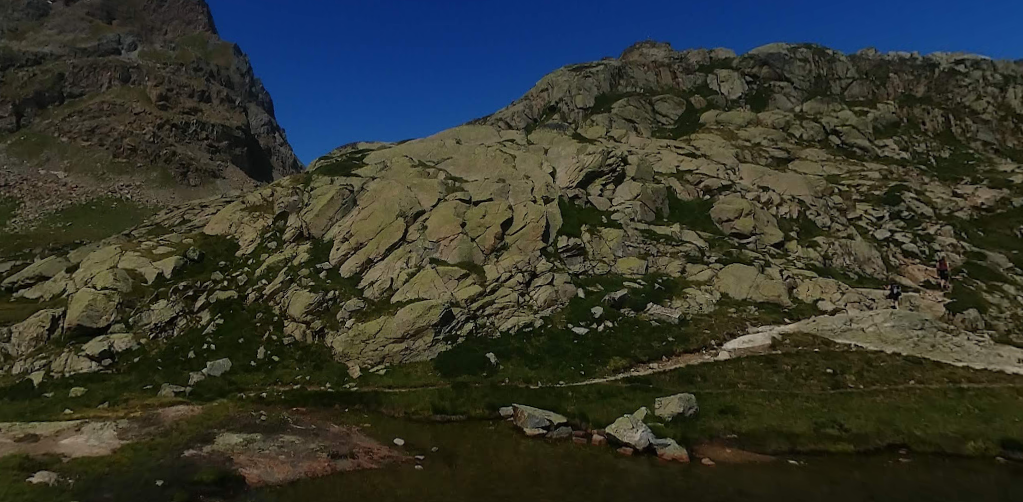

🏘️ Villages to Base Your Adventure
🏔️ Pralognan-la-Vanoise
This is where I spent many weekends growing up. A quaint village at 1,400 meters, Pralognan is often called the “Capital of the Vanoise”. It offers easy access to the Col de la Vanoise trek, charming hotels, bakeries, and mountain guides. Despite its popularity, it retains an authentic alpine soul.
Don’t miss:
- The Mountain Guide Office – Great for weather updates and routes
- Cheese shops selling local Beaufort d’Alpage
- Via ferrata courses for adventurers
🏔️ Champagny-en-Vanoise
Located on the western edge of the park, Champagny is lesser-known but equally stunning. A great base for family hikes, wildlife photography, and cultural visits. It connects well to Refuge du Plan des Gouilles and Lac des Blanchets.
Why go:
- It’s less touristy, ideal for a peaceful stay
- Excellent snowshoeing in winter
- Strong local traditions and festivals in summer
📸 Top Sights You Can’t Miss in the Parc de la Vanoise
🧊 Glacier de Gébroulaz
A stunning glacier accessible from Val Thorens via a full-day hike or ski tour. The ice crevasses and panoramic views make it a must-see.
🪨 Dent Parrachée
This dramatic peak towers above the Maurienne valley and is a favorite among climbers. Even non-climbers can hike around its base for surreal views.
🐐 Vallon de la Leisse
A quiet valley where ibex roam freely. Offers a peaceful, flower-filled landscape in summer and is less trafficked than other routes.
🐦 Refuge de l’Arpont
An incredible base for birdwatchers and hikers. Its recent renovation now offers eco-friendly lodging and solar-powered amenities.
💧Lac de la Vanoise
A glacial lake surrounded by snow walls even in July. A magical picnic spot along the Col de la Vanoise route.
🧙♀️ The Legend of the Sleeping Woman
Among the local folklore passed down for generations, the most haunting is the Legend of the Sleeping Woman of Vanoise.
Long ago, in the time before maps and trails, a shepherd named Elouan fell in love with a mountain spirit — a woman who could speak with marmots, cause wildflowers to bloom, and control the weather with a whisper.
Their love was forbidden, for the spirit belonged to the mountain and Elouan to the world below. One day, caught in a storm he couldn’t escape, Elouan vanished on the heights of La Grande Casse. In her grief, the mountain spirit laid herself across the landscape — her head resting near Val d’Isère, her feet pointing toward Modane.
To this day, the silhouette of a sleeping woman can be seen in the horizon of the Vanoise range — eternal, still mourning her lost love. Locals say that when the wind howls through the cols at night, it’s her sigh echoing through the stone.
And in early spring, the first bloom of edelweiss on a frozen slope? That’s her gift — her heart refusing to give in to winter’s silence.
🐐 Flora, Fauna & Conservation Wins
The park is home to:
- 60+ mammal species: ibex, chamois, marmots, red deer
- 120+ bird species: golden eagles, rock ptarmigan, bearded vultures
- 1,200+ plant species: edelweiss, alpine rose, glacier buttercup
Because of strong conservation efforts, the ibex population has bounced back to more than 2,000 individuals. The park also supports ongoing research on climate change, glacial retreat, and reintroduction programs.
🧭 Final Tips Before You Go
- The best times to visit are mid-June to mid-September
- Refuges get booked quickly — reserve early
- Respect local rules: no wild camping in the park boundaries
- Use local maps (IGN 3534 OT) for accurate navigation
- Speak with park rangers for trail and wildlife updates
🛒 Brands We Trust
At Northern River Adventures, we only recommend and work with outdoor brands we believe in — ones we’ve tested, trust, and would use ourselves. Whether you’re looking for gear, guidance, or unforgettable experiences, check out these partners:
- 🦌 TideWe – Built for the wild. Waterproof boots, waders, and rugged hunting gear trusted by adventurers across the U.S.
- 🎯 Ravin Crossbows – Engineered for power and precision. Perfect for hunters ready to level up their game.
- 🌍 GoWithGuide – Explore the world with a local. Personalized tours from passionate local guides in the U.S. and beyond.
- 🎣 Piscifun – Premium fishing reels, tackle, and gear for beginners and pros alike. Trusted by anglers who love performance without breaking the bank.
🌌 Why Vanoise Stays With You
The Vanoise National Park is a living memory for me — and one that continues to grow every time I return. The stillness of the alpine mornings, the surprise of marmots diving into the grass, the sturdy silence of the ibex watching from the cliffs — all of it is carved into my soul.
Whether you’re a seasoned trekker or just dipping your boots into alpine adventures, the Vanoise offers a transformative experience. It’s a place to unplug, reconnect, and realize how wild beauty still thrives in this corner of the world.
I hope you go. And when you do — breathe deep, listen to the wind, and remember: the mountains are alive with stories, and they’re waiting for yours.
